In addition to Weibo, there is also WeChat
Please pay attention

WeChat public account
AutoBeta


2024-11-17 Update From: AutoBeta autobeta NAV: AutoBeta > News >
Share
AutoBeta(AutoBeta.net)01/09 Report--
Due to the decline of new energy vehicle subsidies, the destocking of traditional cars in the five-year-old and the six-nation-state, and the depression of the automobile market, there has been a huge reversal in China's new energy vehicle market in the past 2019. According to the statistics of the China Automobile Association, after the subsidy for new energy vehicles declined in June 2019, the sales of new energy vehicles in China declined in May in a row, and the rate of decline is increasing. From July to November 2019, sales of new energy vehicles fell 4.3%, 15.8%, 34.2%, 45.6% and 43.7% respectively compared with the same period last year. Among them, November continued to nearly halve the situation. Due to the continuous sharp decline in sales, the domestic new energy industry has taken a sharp turn for the worse, adding to the concerns about the development of new energy vehicles.

For new energy vehicles, there is no doubt about the cold winter. Whether it is NIO, Xiaopeng, Weimar and other new car-building forces, or BAIC, BYD and other domestic independent brands, the development of new energy vehicles in the market has been a huge blow.
According to the latest sales figures released by BYD, cumulative sales for the whole of 2019 were 461399 vehicles, down 11.39 per cent from a year earlier. Of these, total sales of new energy vehicles were 229506, down 7.39% from the same period last year; in December, BYD sold 43179 vehicles, down 37.99% from the same period last year. Among them, sales of new energy vehicles were 13099, down 71.92% from the same period last year.
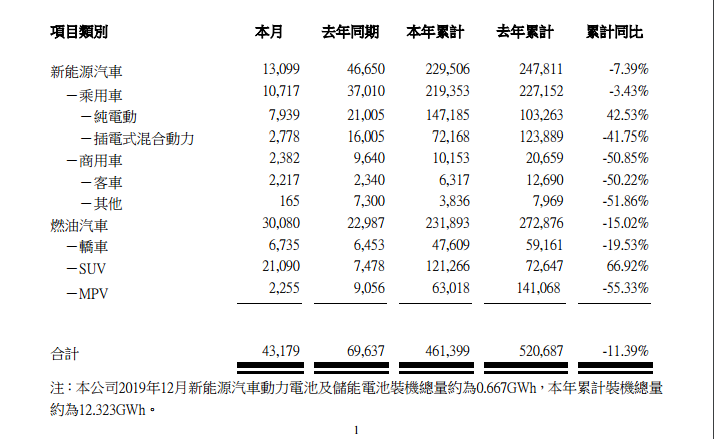
As the leader of new energy vehicles, BYD's sales were still considerable in the first half of 2019, but since July last year, BYD's sales of new energy vehicles have begun to decline, and the rate of decline is increasing. The declines were 11.84%, 23.4%, 50.96%, 54.57%, 62.69% and 71.92%, respectively.
In terms of performance, BYD realized operating income of 93.822 billion yuan in the first three quarters of 2019, an increase of 5.44% over the same period last year, and net profit of 1.574 billion yuan, an increase of 3.09% over the same period last year. BYD expects its full-year net profit in 2019 to be 1.584 billion yuan to 1.774 billion yuan, a decline of 36.19% to 43.03%. The completion rate of BYD's annual sales target (650000 vehicles) in 2019 is 70.98%, of which the completion rate of new energy vehicle sales target (350000 vehicles) is 65.57%.
![1578447615677401.jpg f7e34e7108[1].jpg](https://www.autochat.com.cn/uploadfile/ueditor/image/202001/7b9d723303.jpg)
BAIC New Energy, another giant in the new energy vehicle market, is not alone. According to sales data released by BAIC Blue Valley on January 8, cumulative sales in 2019 were 150601, down 4.69% from a year earlier; in December 2019, sales were 36613, up 23.5% from a year earlier. The completion rate of BAIC's annual sales target of 220000 vehicles in 2019 is 68.45%.
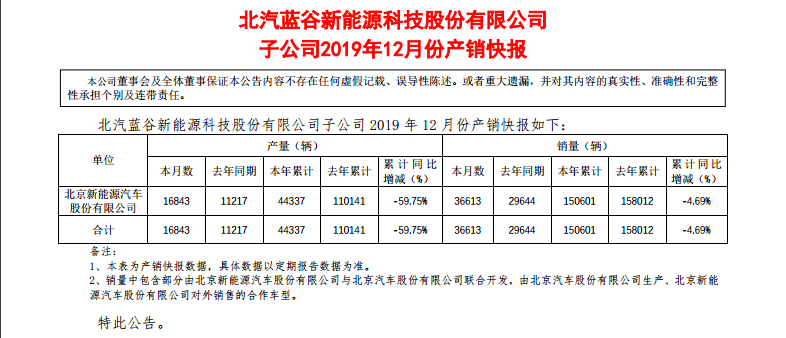
In terms of performance, BAIC New Energy is also not optimistic. According to BAIC Langu's financial report for the third quarter of 2019, BAIC New Energy achieved revenue of 17.484 billion yuan in the first three quarters of 2019, an increase of 78.64% over the same period last year. The net profit attributed to shareholders of listed companies was-269 million yuan, down 303.55% from the same period last year.
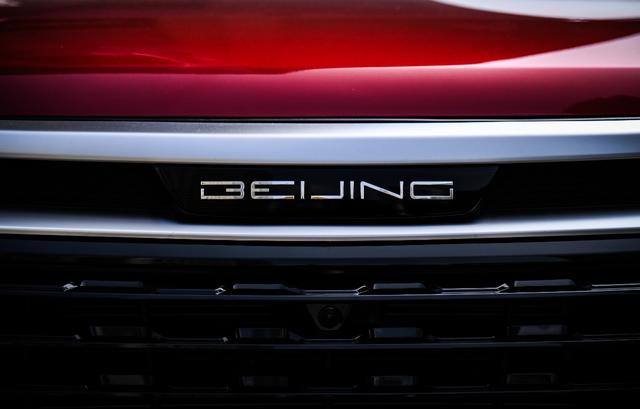
The main reason for the low sales of new energy vehicles is that the decline of new energy subsidies leads to an increase in consumer car purchase costs and a reduction in profits available to car companies in the market, resulting in fluctuations in new energy vehicle sales.
The national government is increasing the development of new energy vehicles, and China is also the largest new energy vehicle market in the world, but at present, new energy vehicles are still not the main consumer market for consumers. Compared with new energy vehicles, traditional fuel vehicles have higher value preservation rate and practical value. Under the high sales of new energy vehicles, in fact, the vast majority of new energy vehicles are put into the B-end market, sold in the form of shared travel and taxi personal business, and only 20% are purchased by consumers. it can be seen that consumers' recognition of new energy vehicles is not high, coupled with the promotion of the complete elimination of new energy vehicle subsidies, new energy vehicle enterprises can hardly have much room for improvement in a short period of time.
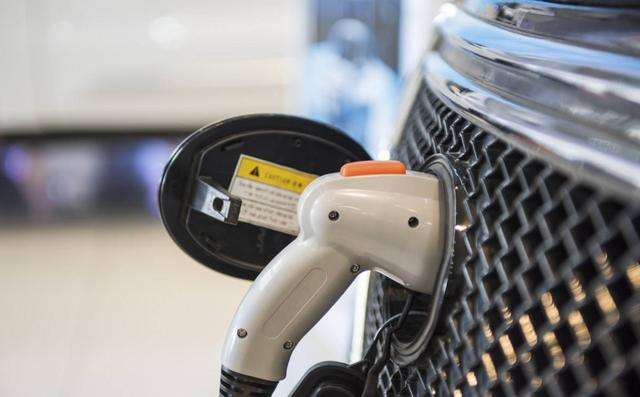
At present, the shortcomings of new energy vehicles are mainly focused on battery capacity, mileage, safety and quality and value preservation rate and other issues. New energy vehicles must effectively solve related problems in order to promote consumers' desire to buy new energy vehicles and improve the space for the development of new energy vehicles.
Welcome to subscribe to the WeChat public account "Automotive Industry Focus" to get the first-hand insider information on the automotive industry and talk about things in the automotive circle. Welcome to break the news! WeChat ID autoWechat
Views: 0
*The comments in the above article only represent the author's personal views and do not represent the views and positions of this website. If you have more insights, please feel free to contribute and share.










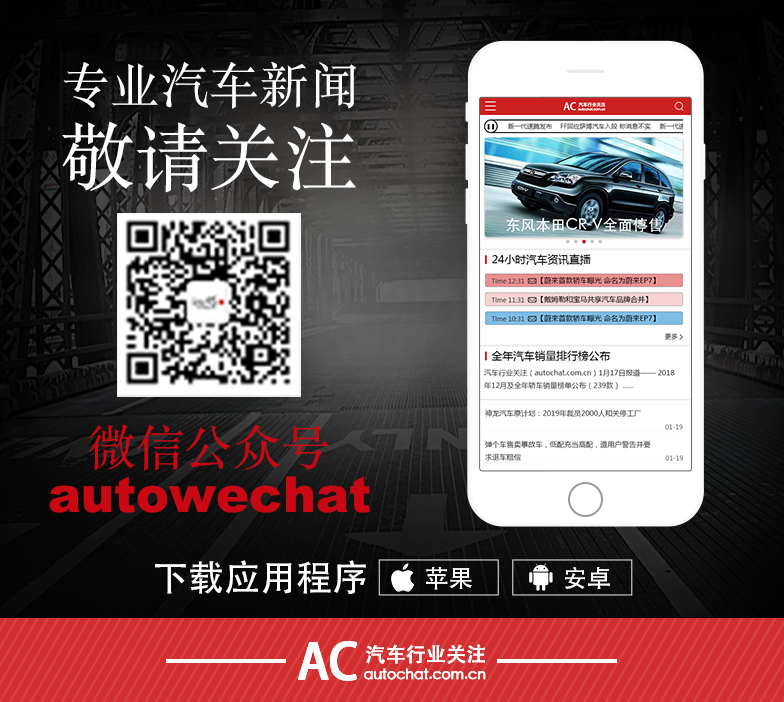
© 2024 AutoBeta.Net Tiger Media Company. All rights reserved.